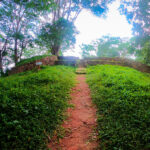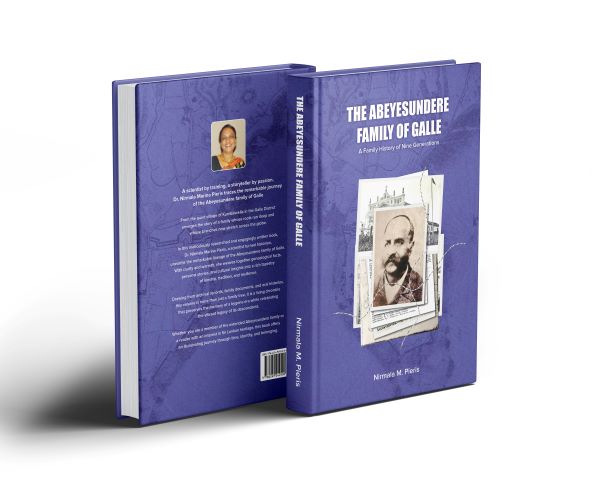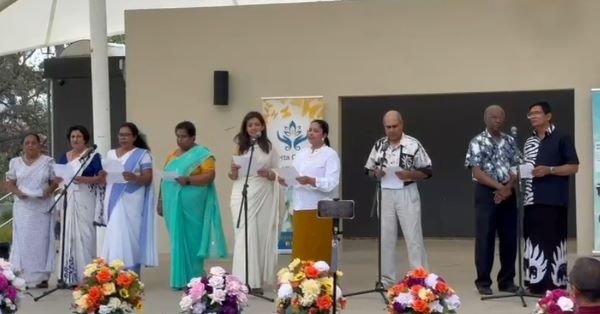KANDYAN ART: LEGACY OF CEYLON

Source:Asianartnewspaper
An exhibition that explores 1,000 years of the island nation of Sri Lanka’s history is currently on show in Arizona. Sri Lanka is located off the southeastern coast of India in the Bay of Bengal and has a deep history spanning more than 3,000 years. The culture of the island has been influenced by many civilisations and dominant world powers over the centuries, including the Persian Empire, Ancient Greece, Rome, the Chola dynasty from South India, as well European invaders. Known for more than 100 years by its British colonial name, Ceylon, Sri Lanka gained its independence in 1948. The exhibition pays particular attention to the distinctive style of Kandyan art.
Buddhist and European Traditions
On show are 50 objects spanning 1,000 years, giving visitors in the US the opportunity to experience a selection of artworks, many of which have never been publicly exhibited before. Viewers can discover the influence of Buddhist and European traditions on the nation’s art history, as well as insights into bronze-casting techniques through small yet technically refined sculptures and bronze figures. Featured works date to as early as the 6th century, however, the majority span the 16th to 19th centuries, the height of the nation’s colonial period, when the island was colonised first by the Portuguese, then the Dutch, and finally by the British. Collectively, this wide range of works offers deep insight into pre-colonial, colonial, and post-colonial life on the island.
Kandyan Art
Highlights of the exhibition are the Kandyan-period art works (1592-1815). Kandy, located in the centre of the island, was the last of the independent kingdoms to fall (to the British) and much of this period’s art and architecture still exist today. The revival of Buddhist architecture and art began in the early 18th century, but it was not until Kirti Sri Rajasinghe (1747-80) ascended the throne that the golden age of Kandyan art flourished. The king not only rebuilt and renovated temples many of the older temples from the Polonnaruwa (1017-1232) and earlier periods, but also commissioned new temples and art and religious sculpture to go in them.
Lakshika Senarath Gamage, in the essay, The Art of the Divided Kingdoms in Sri Lanka, explains, ‘Due to the king’s patronage, the artistic work of the period – a confluence of Buddhism art, and literature – led to the renaissance of the kingdom. Artists were commissioned to decorate temples and cave monasteries with paintings of Buddhist subjects, many of which survive today. The subject matter of the paintings within the main shrine rooms comprises stories from the life of Buddha, Jatakas (past life stories of the Buddha), rows of disciples, and the 28 previous Buddhas.
The Jatakas
The stories were arranged in continuous narratives with architecture and natural elements such as trees, or bodies of water, used as scene dividers. The scenes have no sense of perspective and the figures appear curiously wooden and static drawn on predominantly red backgrounds that contrast well with the golden-yellow and ochre figures. This Kandyan style in art is still popular in Sri Lanka today and are often found repeated in a wide variety of media and architecture. It can be found all over the island, especially in Buddhist-temple wall murals and other religious paintings on wood.
The main protagonist in the story was often rendered in a larger scale, directly facing the viewer with subordinate figures drawn in profile or three-quarter view. Varying shades of red, black, yellow and white were the primary colours used in these Kandyan type of paintings’.
Gilt-Bronze Buddhist Figures
As well as Kandyan-period art, the exhibition has a selection of gilt-bronze Buddhist figures, sculptured in the distinctive Kandyan style. There was a revival of Buddha images depicted in pleated robes, with images made during the later 18th and 19th century having robes where the pleats were shown more rhythmically in a zig-zag pattern. John Listopad in his essay on the Kandyan period in Guardian of the Flame (2003) exhibition catalogue, also held at Phoenix Art Museum, states ‘Two major stylistic movements evolved during the Kandyan period. One was associated with the court workshops and is characterised by a more elongated face – and is generally associated with brick or stucco images from monasteries refurbished by Kirti Sri Rajasinghe and royal-commission bronzes’. The second stylistic change was usually found in smaller bronzes, which have a more rounded countenance, different hairlines, and a refined finish. From the 8th century onwards, most bronze figures were made with a flame finial, sirispata, on top of the usnisa (protuberance), which became stylised and recognisably Ceylonese by the Kandyan period.
Anuradhapura Period
A 6th-century figure in the exhibition represents a much earlier time – the Anuradhapura period (377 BC to AD 1017). This bronze sculpture of a Buddha is seated in virasana with his right hand raised in the gesture of discourse with the thumb touching the forefinger in vitarka mudra, with the left hand closed in ahuyavarada mudra, the gesture of ‘inviting and giving’.
The establishment of Buddhism in Sri Lanka dates from the 3rd century BC, when Mahinda, son of the great Indian Mauryan emperor Ashok, who had converted to Buddhism, visited the island and converted King Devanampiyatissa (r 250-210 BC), establishing the religion of the Anuradhapura kingdom. With the rapid increase in the number of bikkhus (monks), monasteries were built to accommodate the popularity of the religion. After an initial period of Indianisation, which tended to imitate the imported culture from South India, a more distinctive style in art and architecture started to emerge by the 6th century.
Black and White Photographs
To complement the works of art in the show, there are also black-and-white photographs by Quintus Fernando, PhD, who passed away in 2004. These photographs were only discovered within the past decade and were likely taken just prior to the Fernando family’s emigration. This exhibition represents the first time these works are exhibited. Capturing images of not just Buddhist ruins and other iconic locations, the photographs depict simple, everyday slices of life in mid-20th century Sri Lanka, including scenes of fishermen, village women gathering water, and other moments of rural activity. The photographs are set alongside works of historical significance, document the transition of a nation and a people exploring the potential of independence.
Until 6 November, 2022, Phoenix Art Museum, phx.at.org, Guardian of the Flame catalogue is still available.


























